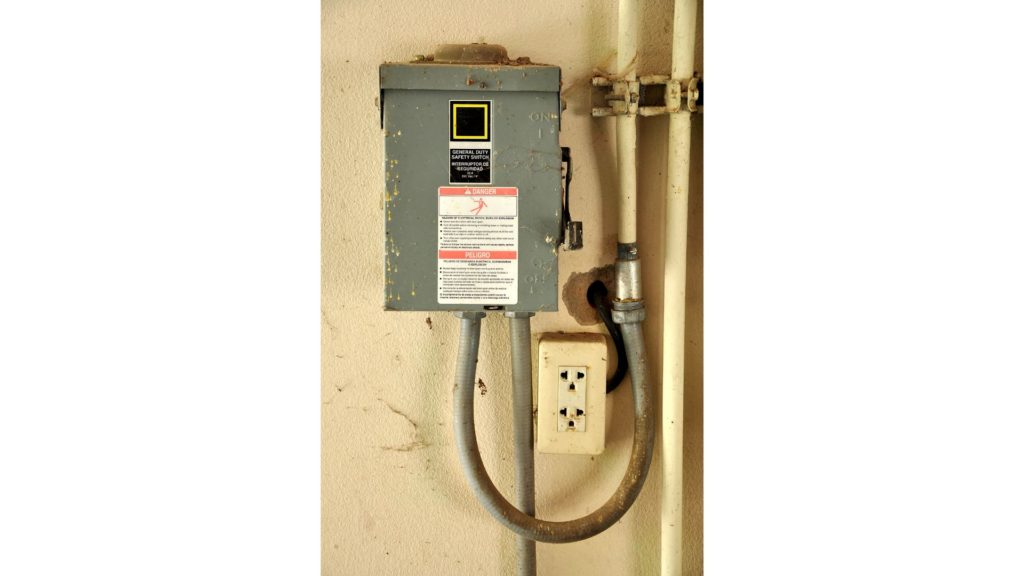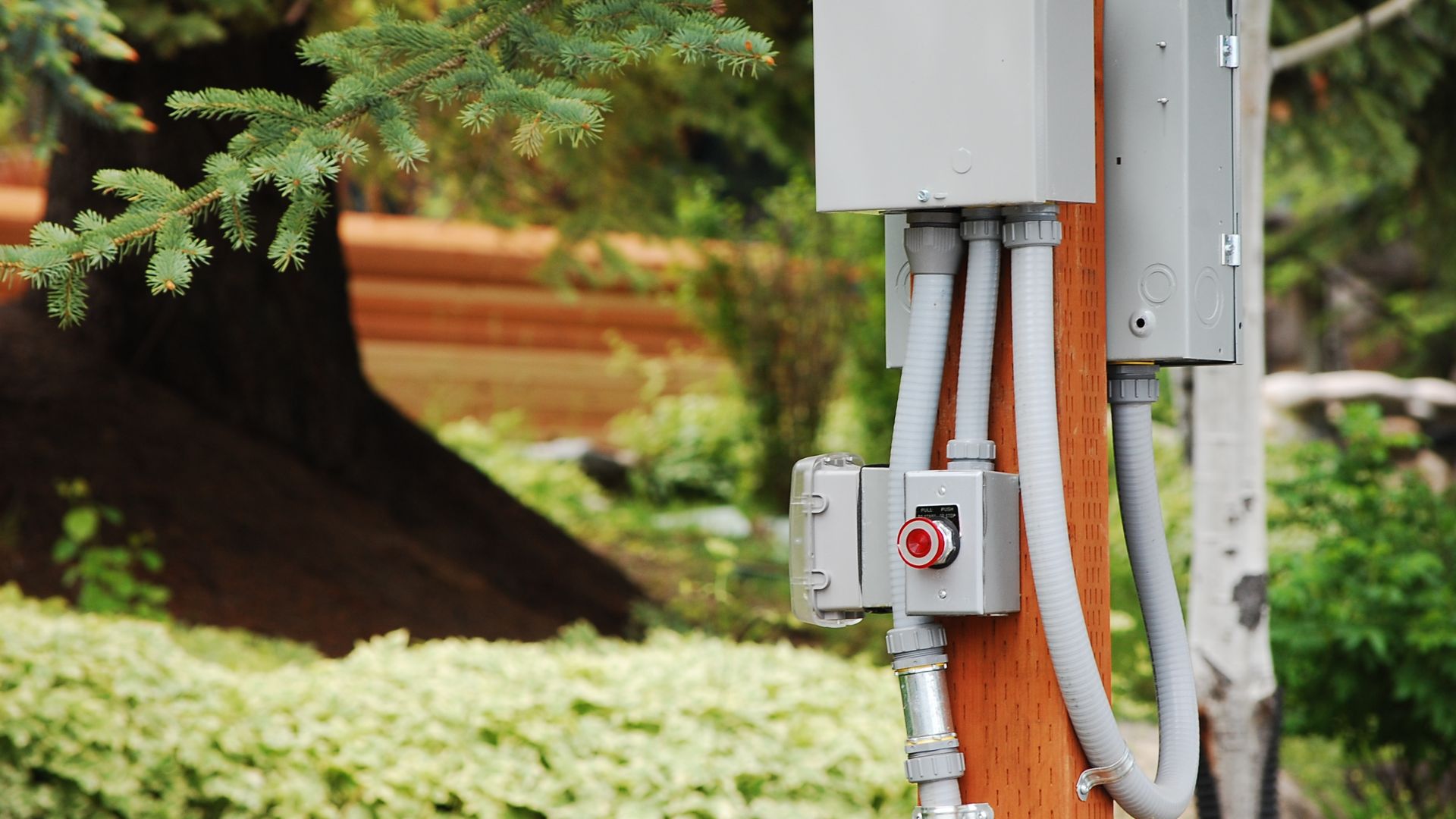Have you ever thought about those holes and cutouts in electrical boxes and enclosures? If you don’t have any electrical experience, you probably ignored them. But if you want to perform an electrical installation, they will come in handy, especially for homeowners that use conduits.
But are knockouts the same size? Do they fit every conduit on the market? What happens when the knockout is larger or smaller than the conduit? This guide will tell you.
Conduit Knockout Size – Why Does It Matter?
- 1″ conduit requires a 1.375″ knockout
- 3/4″ conduit requires a 1.109″ knockout
- 1/2″ conduit requires 0.875″ knockout
- 2 ½” conduit requires a 2.969″ knockout
- 6/3″ conduit requires a 6.813″ knockout
- 3″ conduit requires a 3.594″ knockout
| Conduit Size | Knockout Size |
| 1 | 1.375 |
| ¾ | 1.109 |
| ½ | 0.875 |
| 2 ½ | 2.969 |
| 6/3 | 6.813 |
| 3 | 3.594 |
This question won’t make sense if you’ve never heard of the term ‘Knockout’ in relation to electrical conduits. However, every layperson has seen a knockout, even though they couldn’t give it a name.
Look at the electrical boxes in your home. Many of them have unused openings on the side. Those openings are not an accident. Manufacturers include them to accommodate installations that require the contractor to make holes in the box.
You can make your own holes if you want. However, manufacturers have knockout punches that can create the necessary openings without damaging the enclosure in question.
This was not always the case. ECMag has spoken of a time when contractors would drill small holes and ream them. But then knockout tools entered the picture in the late 1920s, and everything changed.
They are versatile and capable of making holes in everything from stainless steel and aluminum to plastic and fiberglass. The accuracy of a knockout tool is vital because an imprecise hole will prevent the conduit from aligning properly.
This is why the knockout size is so important. If you look at the openings on the side of your electrical boxes, you will notice that they are a perfect fit for electrical conduits.
You can pass bare wires and cables through the knockouts. They perform this role sufficiently. However, you can also trust the openings to accommodate pipes. But the size has to match.
If the conduit is bigger than the knockout, it won’t fit. If the pipe is too small, you cannot create a secure connection. Therefore, the knockout size is extremely important.
How To Find Exact Knockout Size For Conduit?

Contractors appreciate panels and enclosures with knockout holes because they can install wires and conduits without making new holes. You don’t have to tolerate smaller knockouts.
You can enlarge them to accommodate larger conduits. But this process is inconvenient, regardless of whether you prefer the manual or hydraulic method.
If you have the right tools, they will make openings that match the standard conduit sizes. In other words, you can make a hole knowing that it will fit the conduit you have on hand.
But again, this process is an inconvenience. You are better off selecting panels and enclosures whose openings match the conduit. The family handyman has highlighted a type of box with threaded holes that make water-resistant connections possible.
But you cannot create a secure connection unless the knockout hole fits the conduit size.
Fortunately, you don’t have to overthink this decision. You can check the below table that shows the different conduit sizes and their corresponding knockout sizes.
Conduit And Knockout Size Chart
| TRADE SIZE | Conduit Size |
| 1/4 | 0.575 |
| 3/8 | 0.718 |
| 1/2 | 0.875 |
| 3/4 | 1.109 |
| 1 | 1.375 |
| 1-1/4 | 1.734 |
| 1-1/2 | 1.984 |
| 2 | 2.469 |
| 2-1/2 | 2.969 |
| 3 | 3.594 |
| 3-1/2 | 4.123 |
| 4 | 4.641 |
| 4-1/2 | 5.109 |
| 5 | 5.719 |
| 6 | 6.813 |
Charts and tables of this sort are a dime a dozen. Before buying a panel or enclosure, look at the manufacturer’s documentation. It will reveal the sizes of the knockouts.
Some people make the mistake of buying the enclosures first, and then they select matching conduits. However, this will force you to tolerate the wrong pipes.
Get the conduits first, and then select enclosures with suitable openings. If the gaps are too small, you can enlarge them.
Does Knockout Size Differ According To Different Types of Conduit?
The type of conduit can affect the knockout size. For instance, rigid PVC-coated tubes have a larger outside diameter than other types of pipes.
It is worth noting that you won’t use all the openings that manufacturers add to a box or enclosure. This is why many of the enclosures in your home have unused openings.
They exist to give you options. But Star Tribune checked the national electric code, and from what they saw, you have to close unused openings. You can’t just leave them exposed because you think they will come in handy down the line.
First of all, you want the enclosure to contain some of the sparks and explosions that occur during an emergency. But if you have an unused opening, those sparks and explosions will escape, wreaking unnecessary havoc.
Secondly, a child could touch the exposed wires in an enclosure with an opening.
You don’t lose anything by closing these holes. The Washington Post has made an interesting observation. Some contractors encounter openings that are not a standard size.
In other words, the holes cannot accommodate the conduits they want to use. When that happens, they will drill through the box to create a suitable opening.
Therefore, even if a need arises for the holes you covered, you can either remove the plugs or drill new holes.
If you open a knockout hole you don’t need, NY Engineers recommends using seals that manufacturers designed for the express purpose of closing opened knockouts.
But this creates the same problem consumers associate with conduits. You must match the conduit size to the knockout size to make a secure connection.
This consideration applies to the knockout plug. You must determine the size of the knockout hole to identify a knockout plug of the correct size. Knockout seals and plugs are available in small packs in hardware stores. They are relatively inexpensive.
Make sure the plugs and seals are too tight for anyone to remove without the appropriate tools.

